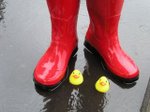 It was only last winter with Alice Munro's Best that I finally discovered Munro hadn't spent her career writing Lives of Girls and Women over and over again, and so I was very pleased to pick up her new short story collection Too Much Happiness. And once again, I was impressed by the scope of her work, in two senses. The first, in that there seems to be no template for an "Alice Munro Story". Set in the past and present, with first and third person narration, with male and female protagonists, about events remarkable and mundane.
It was only last winter with Alice Munro's Best that I finally discovered Munro hadn't spent her career writing Lives of Girls and Women over and over again, and so I was very pleased to pick up her new short story collection Too Much Happiness. And once again, I was impressed by the scope of her work, in two senses. The first, in that there seems to be no template for an "Alice Munro Story". Set in the past and present, with first and third person narration, with male and female protagonists, about events remarkable and mundane.But I was also struck by the scope of many of the stories here themselves, how they begin at a fixed point, and then suddenly zoom far out to show the perspective, and hindsight, of an entire lifetime. "Fiction" begins with young Joyce, who's just lost her carpenter husband Jon to his apprentice and is devasted, and then suddenly we're whisked off to Joyce second husband's sixty-fifth birthday. "Deep Holes" starts with the details of a picnic, with devilled eggs and a nursing baby, and ends years in the future as a mother encounters her long-estranged son. And I love that-- how this zooming out turns the story inside out, and makes it something so completely different than we figured we were being set up for.
The final story in this collection seemed out of place to me, however-- perhaps because I haven't read Munro's The View From Castle Rock, with much of its fiction taken from historical fact? As this final story's title is also lent to the entire collection, however, I decided to read it again quite closely and view the whole book through such a prism. "Too Much Happiness" is the story of nineteenth century Russian exile, mathematician and novelist Sophia Kovalevsky. The story is a collection of scenes from near the end of her life, which she'd supposed might actually be a new beginning-- she'd become engaged to the man she loved, and having previously not been sure "whether she was going to happiness or sorrow", she decided it was to be "Happiness after all."
Happiness, we learn from this story, is a trick after all. Sorrow is inevitable, and the trick of happiness seems to be that too much of it is the direct route to sorrow anyway. That the end of the story will always be the same, and seems to be the case in all of these ones, nothing really changed but just confirmed. But yet as the characters realize this, we as readers have realized that things as we've been seeing them are not like we've imagined them. Munro twisting her plots masterfully to create suspense, tension, absolute horror-- these are stories in which things happen, which in the case of the contemporary short story is not as obvious as it sounds.
These are stories that bring us to the brink of discomfort, and Munro compels us over the edge just to see what's happening there. The woman going to visit her husband in prison for murdering their children, a strange naked dinner party at which our narrator's buttocks slap against a dining room chair, a woman telling a story to save her life, the man with the birthmark, the girl who detests being followed by her mentally disabled neighbour which leads to fatal consequences...
"Too Much Happiness" is still the odd story out, it seems. Set outside contemporary times, outside of Canada, about a historical figure, however little known. So much a series of sketches, it's hard to get a sense of the story as a whole, to find the vividness Munro gives us elsewhere. And yet I do suspect there is trickery here too, and I do get a sense that here lies the key to it all. "Actually, this science," Kovalevsky wrote of artithmetic, "requires great fantasy", just as the best kind of fiction is a problem to be solved.

